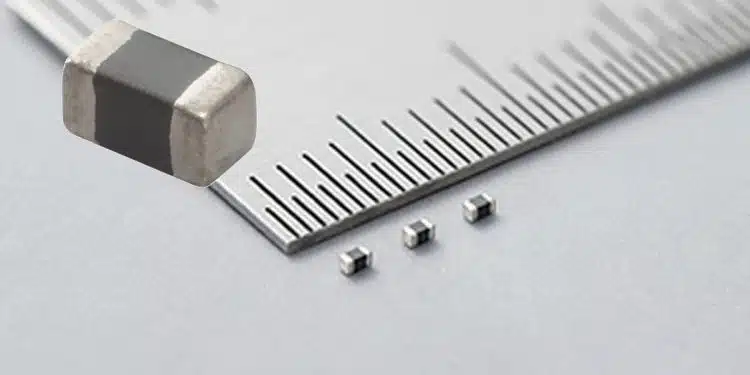Murata has broadened its portfolio of chip ferrite beads with the introduction of the 0402 chip ferrite beads BLM15PX_SH1 and BLM15PX_BH1 series. Supplied in a 1005 mm (0402 inch) size, these compact and rugged units are highly optimised for automobile deployment.
They present engineers with the industry’s first power supply line noise suppression components in this size format. Current rated versions of 900 mA to 3000 mA are available, with impedance figures at 100 MHz of 33 Ohms to 600 Ohms being covered.
With mechanical systems inside vehicles being replaced by electronic ones, plus increasing levels of data acquisition being witnessed, suppression of electro-magnetic interference (EMI) noise emanating from power supply lines is recognised as a vital element of modern automobile design. The number of sensors and cameras being incorporated into vehicles is increasing dramatically, in order to support ADAS and eventually autonomous driving, and the integrity of the data captured by these devices needs to be maintained while it is transported to and from the relevant ECUs.
The inherent robustness of Murata’s AEC-Q200 qualified BLM15PX_SH1 and BLM15PX_BH1 series make these chip ferrite beads highly suitable for use in uncompromising automotive environments. The low DC resistance characteristics of these components (down to 0.022 Ohms Max.) helps to mitigate the power losses experienced and keeps associated heat generation to a minimum. The BLM15PX_SH1 series supports an operational temperature range of −55°C to +125°C with the BLM15PX_BH1 series supporting an even greater range of −55°C to +150°C.
“Engineers need to ensure that high degrees of noise control have been implemented, so that in-vehicle infotainment and driver assistance functions will not be impacted,” states Tomohiro Yao, EMI Division, General Manager of Marketing & Promotion Department, at Murata. “The BLM15PX_SH1 and BLM15PX_BH1 series set new benchmarks when it comes to noise suppression, delivering performance capabilities that would normally only be possible with much larger components.”
































